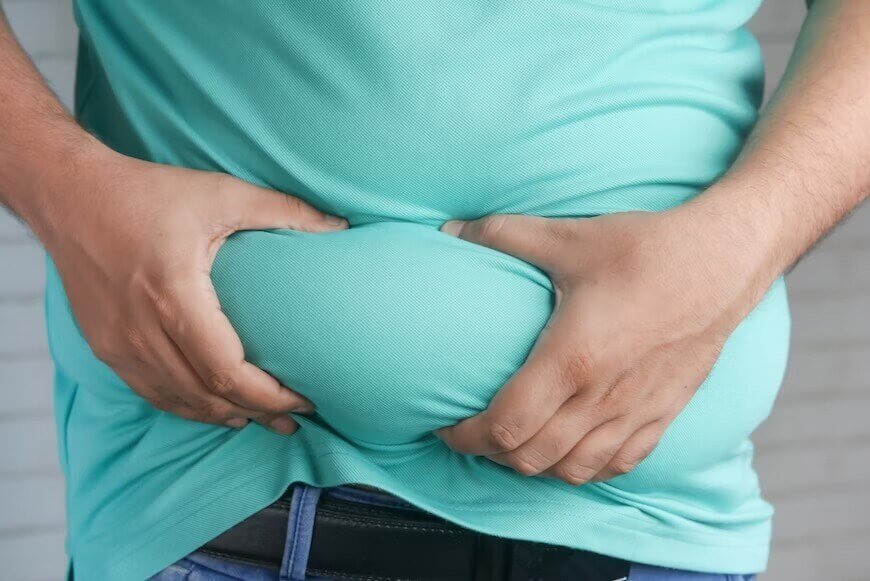Liposuction can seem like a dream come true. You enter a hospital or clinic and emerge just hours later with a more slender silhouette.
At least, that’s the desired outcome. But the reality is that liposuction results can take a few weeks or months to assume their final shape. And then, there’s the issue of excess skin for some patients.
Could you have excess skin (“skin redundancy”) after liposuction? And if you face this possibility, are there any steps you can take to avoid the problem?
Today we discuss what skin redundancy is, plus how you can minimize your risk of developing it.
What Is Liposuction?
Liposuction is a method of removing fat from the body surgically.
A sterile instrument called a cannula is placed through a small incision in the skin. An attached vacuum then draws fat cells out of the body for a slimmer, more toned look.
What Is Skin Redundancy?
You may have heard the term “skin redundancy” and wondered what it meant. This is particularly true if you’ve been researching liposuction.
Skin redundancy is another phrase for excess skin. It is usually caused by extreme fat loss, which can happen after extreme weight loss or pregnancy; however, it can also happen after liposuction if a significant amount of fat is removed (though it’s comparatively rare).
How Skin Redundancy Happens
The best way to understand skin redundancy is by imagining a balloon.
If you blow up a balloon and then let the air out, the “skin” of the balloon may remain somewhat stretched instead of reverting to its former shape or size. It might also appear wrinkly or bumpy.
The same can happen to the skin after it is significantly stretched (as with pregnancy or weight gain).
What Factors Can Result in Skin Redundancy After Liposuction?
Not everyone has skin redundancy after liposuction. But it can happen if proper surgical techniques are not used.
You are more likely to have excess skin after liposuction if:
- You have a larger amount of fat removed from the area than is common
- You are older (skin heals more slowly as we age)
- You already have loose or excess skin in the area before liposuction
- Your skin is dry rather than naturally oily
- You have the genetics (family history) for developing excess skin
Will You Have Excess Skin After Lipo?
Nobody can predict whether you will have redundant skin after liposuction, even if you have some of the risk factors above. Keep in mind that most people are pleased with their liposuction results, especially if they choose an experienced plastic surgeon.
Also, remember that the total amount of fat that can be removed from the body during one liposuction session is limited. You may be envisioning a more dramatic loss of fat than you can realistically expect.
Ask your doctor how much fat will be taken from the area or areas you have selected, and whether your skin should bounce back afterward.
Steps to Minimize Your Risk of Skin Redundancy
Besides the relatively low risk of significant excess skin after liposuction, there are things you can do to encourage a great result. Try these tips:
1. Give it Time
After your procedure, your skill will attempt to repair itself. The body is an amazing machine. Lax skin may tighten during the weeks and months after liposuction.
Swelling will go down and eventually disappear during that time.
2. Stay Hydrated
Hydrated skin always looks better than parched skin. No matter what your situation, your skin will look much better and will “plump out” when you’ve been drinking plenty of water.
3. Work Out
Firm muscles underneath can make the skin over them look better. Do keep in mind that working out won’t tighten your skin; however, it can make your appearance smoother overall.
4. Follow ALL Your Surgeon’s Instructions
Your plastic surgeon will send you home with instructions on how to treat the area after your procedure. Make sure you follow your doctor’s directions to the letter. This will ensure your best outcome.
If Your Excess Skin Continues to Be a Problem
If you already have lax or excess skin, such as “bat wings” or a belly “apron” (fat that hangs from the lower abdomen), you can’t expect that the skin issue will be resolved with liposuction. Liposuction removes fat; it does not tighten skin.
For this reason, some patients, especially those who have significant excess skin due to pregnancy, weight loss, or the aging process, undergo two plastic surgery procedures at the same time. For example, you might have arm reduction surgery (brachioplasty) along with liposuction for a smooth, young look.
Bear in mind that such patients already know they have loose skin. It is very unlikely that you will go into a liposuction procedure with firm, tight skin and come out with grabbable excess skin. Most patients who have more than one procedure have already been dealing with skin redundancy. If this is you, make sure to ask your plastic surgeon what your options are.
By following the above tips and selecting a reputable doctor, you’ll have the best chance at a result you’ll love.

